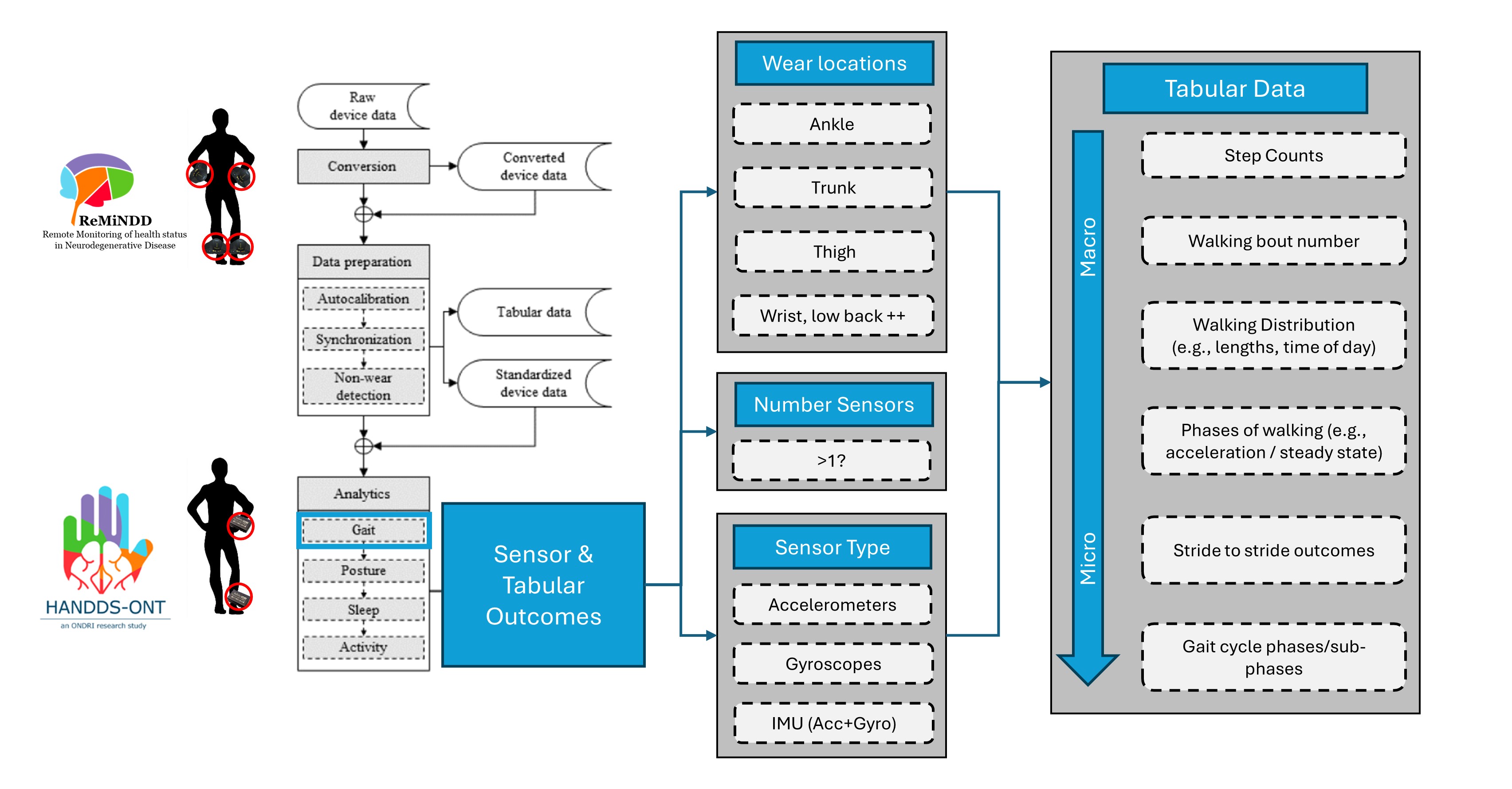Category: Technology
Objective: To provide a framework for a device agnostic gait analytics pipeline for standardizing and improving quantitative gait analysis using wearable sensors.
Background: Gait impairments affect the quality of life of people living with neurodegenerative disease (NDD). Wearable sensors provide a clinically feasible approach for quantitative evaluation of gait impairments and risk of adverse events in clinical and at-home environments. However, sensor wear is not standard across study protocols which poses a challenge for the utility of existing analytics for gait assessment. Thus, there is need for a flexible gait analytic pipeline to consolidate analysis for both clinical and free-living gait that is effective among individuals with NDD.
Method: Wearable sensor data collected from the Remote Monitoring in NDD (ReMiNDD) [1] (n=39) and the Health in Aging, Neurodegeneration and Dementias in Ontario (HANDDS-ONT) (n=246) studies were used in the development of a device agnostic gait analysis pipeline [2]. Participants included community-dwelling older adults and people living with NDD (e.g., PD, AD/MCI, FTD) or cerebrovascular (CVD) disease. The analysis pipeline uses raw inertial sensor data to calculate macro- to micro-level outcomes of clinical and free-living gait [figure1]. Within ReMiNDD, participants wore bilateral ankle and wrist accelerometers and a chest sensor during a clinical gait assessment and within HANDDS-ONT participants wore inertial measurement units on the wrist and ankle unilaterally and a chest sensor. Both studies included a 7-day continuous wear period.
Results: In total, 285 participants had valid sensor data from both the ReMiNDD and HANDDS-ONT studies. Analysis pipeline output gait outcomes for all sensor inputs with excellent accuracy during clinical walking (>95%) from ankle sensors. During free-living, participants wore the sensors continuously for 7.1±1.8 days and on average accumulated 8405.6±8080.2 steps/day across 1864.7±1781.2 bouts/day for all cohorts in both studies.
Conclusion: An iterative device agnostic approach for gait analysis provides a centralized assessment pipeline that can reliability and accurately detect walking across sensor types and wear locations among people with NDD and CVD. Future pipeline developments rely on health-related and person-centered analytic approaches for disease specific outcomes (e.g., freezing of gait) across optimal wear locations.
Simplified flow diagram of gait analytics pipeline
References: [1] Godkin, F. E., Turner, E., Demnati, Y., Vert, A., Roberts, A., Swartz, R. H., … & Van Ooteghem, K. (2022). Feasibility of a continuous, multi-sensor remote health monitoring approach in persons living with neurodegenerative disease. Journal of neurology, 1-14.[2] Beyer, K. B., Weber, K. S., Cornish, B. F., Vert, A., Thai, V., Godkin, F. E., … & Van Ooteghem, K. (2024). NiMBaLWear analytics pipeline for wearable sensors: a modular, open-source platform for evaluating multiple domains of health and behaviour. BMC Digital Health, 2(1), 8.
To cite this abstract in AMA style:
B. Cornish, K. Beyer, K. Weber, A. Vert, K. van Ooteghem, W. Mcilroy. A Device Agnostic Pipeline for Gait Detection and Assessment in Free-living and Clinical Environments [abstract]. Mov Disord. 2024; 39 (suppl 1). https://www.mdsabstracts.org/abstract/a-device-agnostic-pipeline-for-gait-detection-and-assessment-in-free-living-and-clinical-environments/. Accessed September 12, 2025.« Back to 2024 International Congress
MDS Abstracts - https://www.mdsabstracts.org/abstract/a-device-agnostic-pipeline-for-gait-detection-and-assessment-in-free-living-and-clinical-environments/

